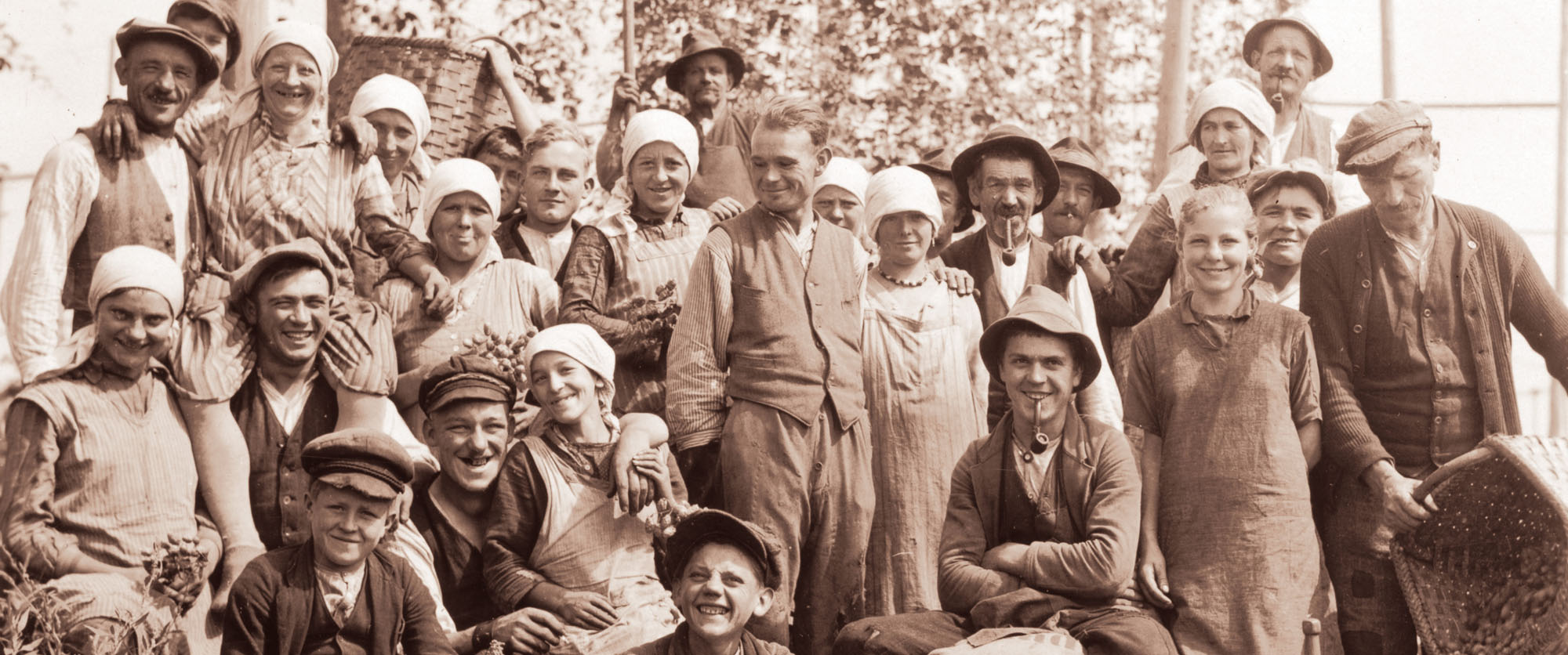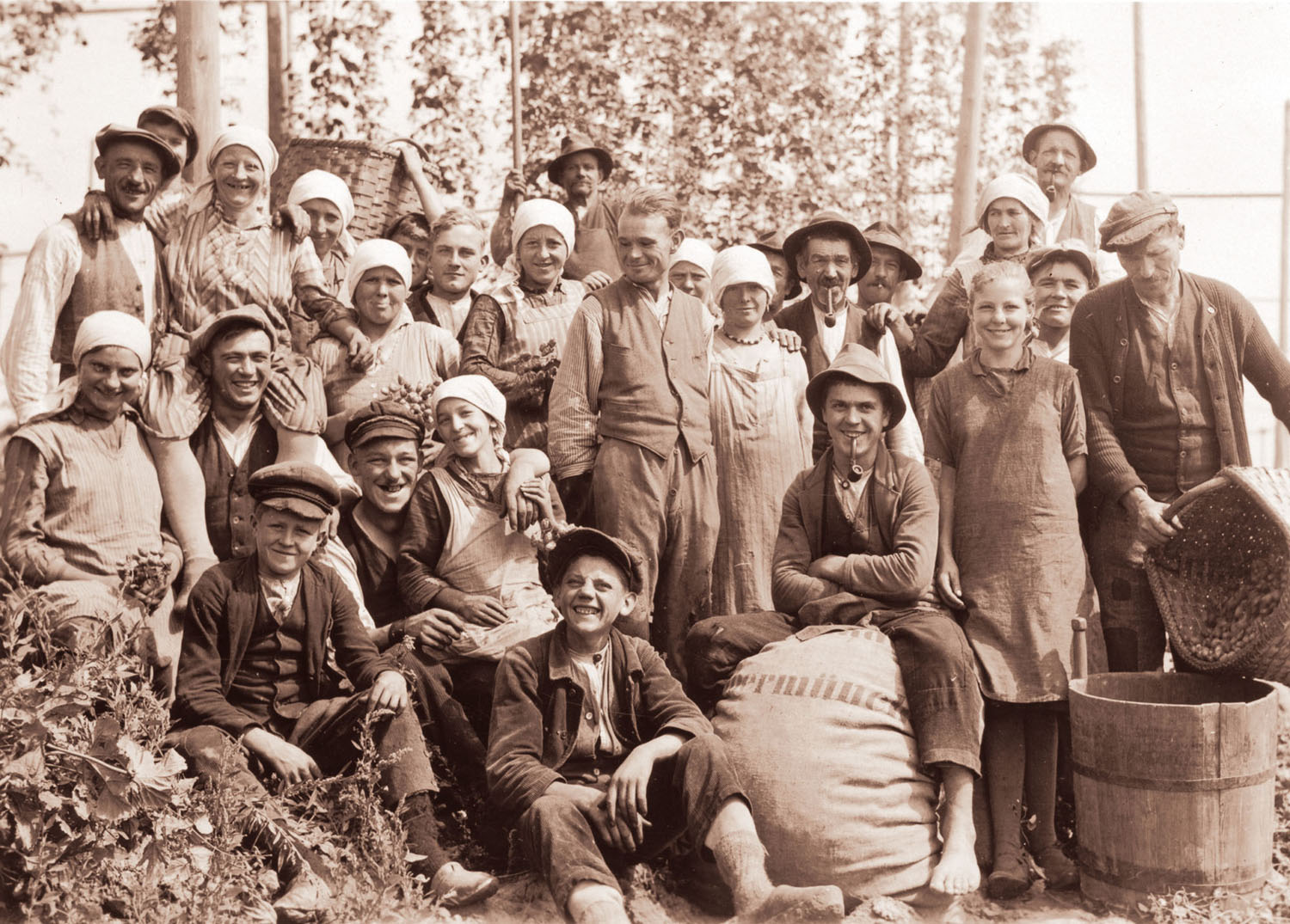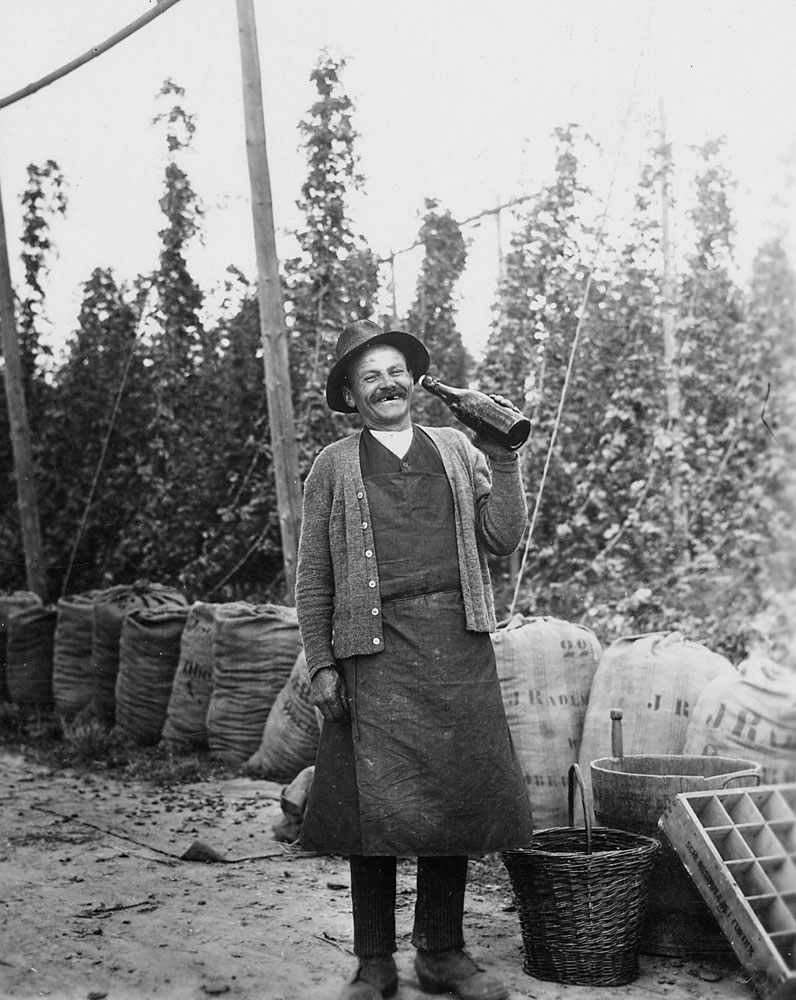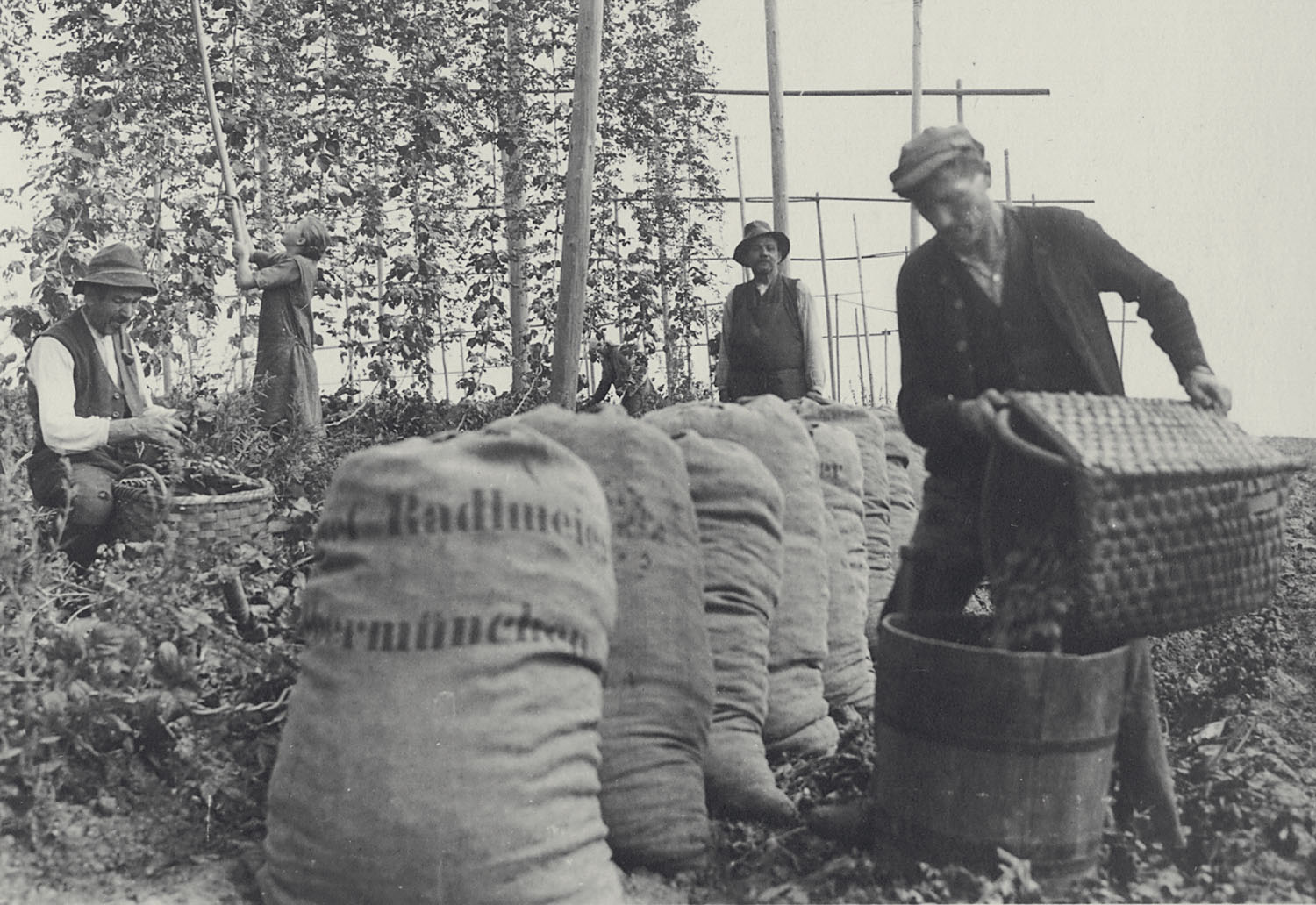
Stories from Obermünchen
A photo work of art
Photography is and remains an art, even if the quick shot from the mobile phone has reduced the effort a bit. When this picture was taken, things were very different.
When the state inspector for hop cultivation, Hugo Hampp, went to visit the eastern edge of the Hallertau in the late summer of 1931, he had all his photographic equipment with him, as always. Hampp was an agricultural specialist and not a trained photographer. Nonetheless, he achieved exceptional mastery in handling the camera. For Hampp, photography was both a professional necessity and a passion. He became one of the most important annalist of Hallertau hop-growing history.
At that time, Obermünchen with its approximately 100 inhabitants was still an independent community. Today it is a part of Obersüßbach. Josef Radlmeier was the owner of house no. 24, a part-time innkeeper and grew almost two hectares of hops. That would be a joke by today’s standards, but at that time he was one of the larger hop farmers in the Hallertau and was the largest in his community. Accordingly, he could no longer just recruit his hop pickers from servants or neighbors. We no longer know whether they came from the Bavarian Forest, from the Upper Palatinate or from somewhere else, like so many of the harvest workers.
What was remarkable about Hampp’s passion for photography was that he captured many of his subjects with a large format camera. Some of his original negatives are now in the collection of the German Hop Museum. The 9 x 12 cm negative of the image from Obermünchen was also preserved. Hampp will almost certainly have used a tripod for this; his camera was much too big for the quick shot from the hip.
All the more astonishing is the mood that he captured for eternity. Usually, professional photographers drove to the hop gardens from the nearby bigger towns. Their group pictures worked a bit like class photos. A souvenir of special times, everyone in the picture was considered a potential customer, the more people in the picture, the better. It could take a while until everything was arranged, everyone in the right place, in the right pose, covering nobody, eyes open, mouth closed. The result was a photographic memento, but it tended to be a bit stiff.

Group of hop pickers in Obermünchen (Hallertau), 1931
Everything is different in this photo. Hampp didn’t want to do business. He succeeded in capturing a piece of liveliness on nitrofilm. Old hop farmers like to talk about the hop harvest of days gone by as if it had been like a holiday camp there. Mood, fun, jokes. If a hop-pickers group photo has survived from which such a state of mind literally jumps out at the viewer, it is this picture from Obermünchen. The atmosphere is not only cheerful, everyone seems relaxed, laid-back. Just as if the hop harvest had been less monotonous sitting and picking but more a soothing relaxation exercise for arms, back and mind. Hop Qi Gong.
They all come across as friendly, you want to sit with most of them over a beer in the evening, learn more about them, make friends. Stories are hinted at everywhere, stories that we no longer know anything about, we can only fantasize about them a little bit. Did the couple in the middle become something longer or was it just a hop-picking flirt? With consequences? Then the size difference in their hands. What a paw. And what is the handsome gentleman in the middle thinking when he looks at the two with a little amusement? All the best? Or is there a bit of indignation about so much relaxed happiness?
The boy in the foreground is probably still amused by the prank he pulled the night before and is planning the next one. Did the young man on the sack later get problems with his smoking passion? The picker with the flat cap on the left just fell about laughing about his idea of hoisting his colleague onto his shoulder. She looks like the great joker, always a funny slogan in store. Who was the best picker? A woman in any case, the women in a hop crop were always quicker than the men. Maybe the slender woman in the back right? But why does she put her hand on the elderly gentleman’s shoulder? Her father? In any case, he was there for a long time, that’s for sure, a loyal helper. Between the two with a mustache and a cigarette, slightly hidden, more of a rascal. Certainly a good card player.

Flasche voll? Eine Menge Details für den, der genau hinsieht: die Bierflasche stammt von der Brauerei Wittmann aus Landshut, anders als der Bierkasten, der kam von der Schlossbrauerei in Furth. Beides nicht weit von Obermünchen entfernt. Auch der unge-wöhnliche Holzmetzen ist wieder im Bild. Nur mit dem Trinken wird es nicht ganz ge-klappt haben bei geschlossenem Bügelverschluss…
As always, the clothing is kept rather too warm, all men wear waistcoats, almost all hats or caps, all women a scarf around their heads. Just not the girl with the friendly smile. Whom did you think her angel face enchanted later?
Striking are the bad teeth, which laugh unabashedly at the camera as a side effect of the relaxed atmosphere. The wooden tub for measuring is unusual. Tin buckets with a calibration seal, called Metzen, were common in the Hallertau at the time. The hop measurer carries out his work with the concentrated expression of an usher. In another picture Hampp took with the 35mm camera, he puts on the same serious expression. At the end of the day it was about the money. It wasn’t a holiday camp, even if the mood was right. Everyone wanted to earn money, pickers and hop farmer.
The gentleman who has positioned himself so discreetly in the background is also an interesting one. The pole he’s holding on to suggests it was the ‘Stangler’ who was taking down the hop vines. The restraint that was expressed here was rather unusual, in other pictures the “Stanglers” liked to place themselves confidently in the center.

Gleiche Miene, gleiches Amt: beim Abmessen war Schluss mit lustig. Der Herr links mit Pfeife diesmal bei der Arbeit, der Stangler lässt – ungewöhnlich – eine Frau seine Arbeit verrichten.
We no longer know who the hop pickers in the photo really were. There shouldn’t be any of them alive anymore. Less than ten years later, most of them will have lost their good spirits, some of the men probably never came back from the battlefields of the World War and the women had to watch them support their families without the help of their spouses.
The Radlmeier hop farm still exists today and the inn is still in operation.
Hugo Hampp had to resign from office in 1943 for somewhat dubious reasons. He died in seclusion in his Freising apartment in 1954. Luckily, his paintings survived.